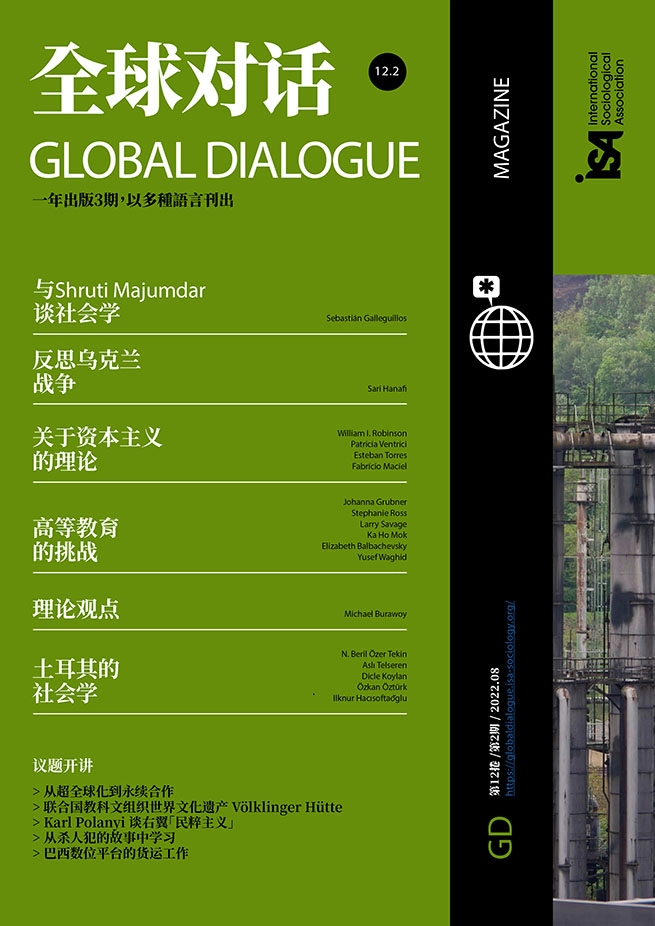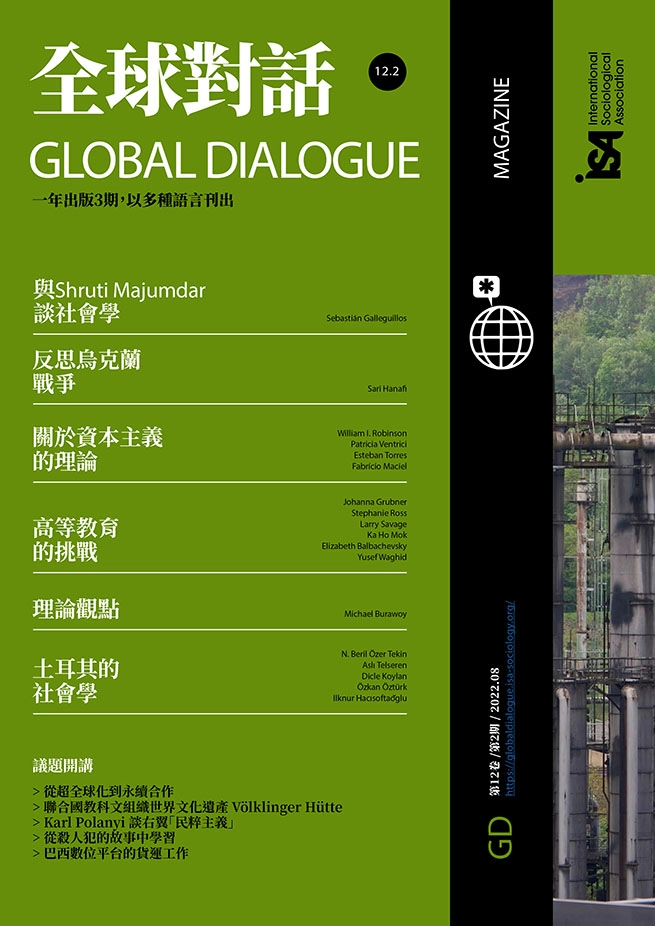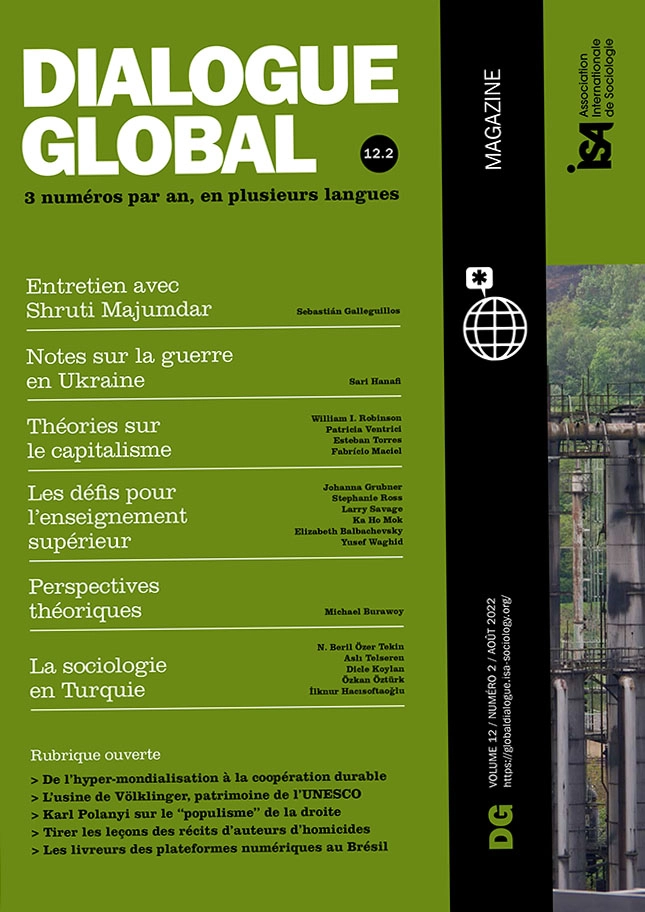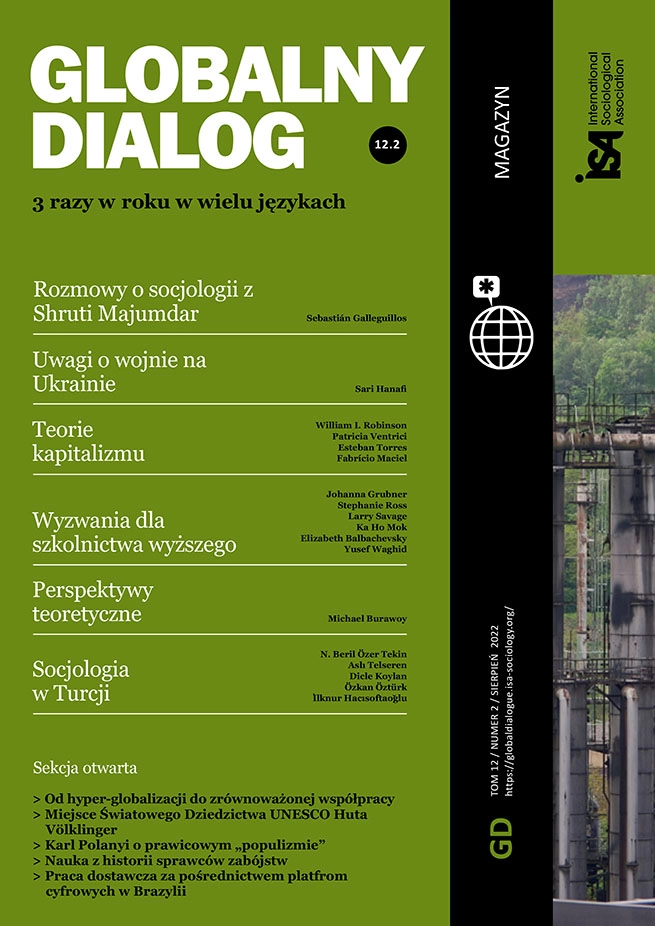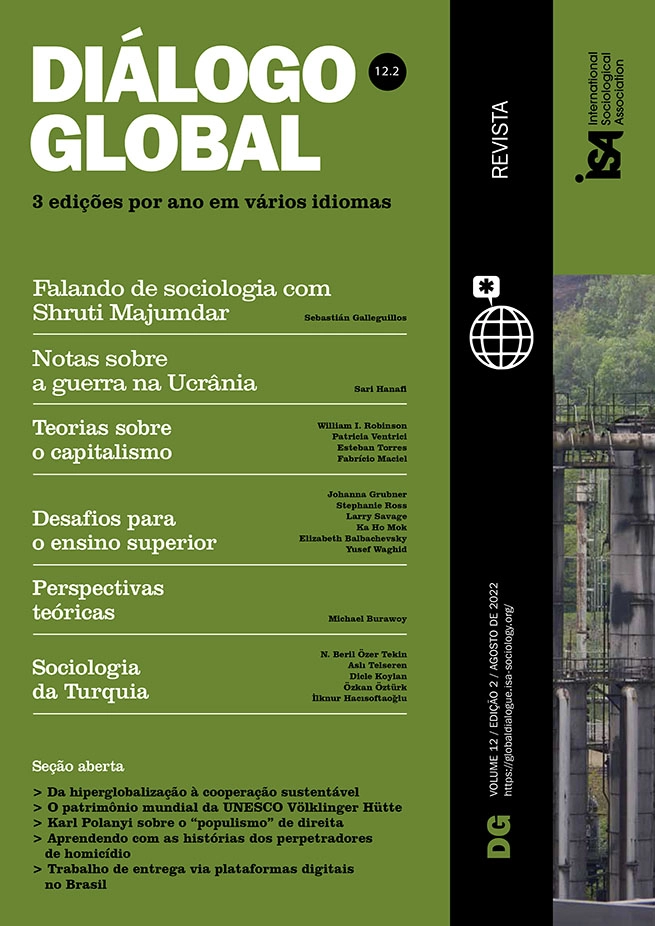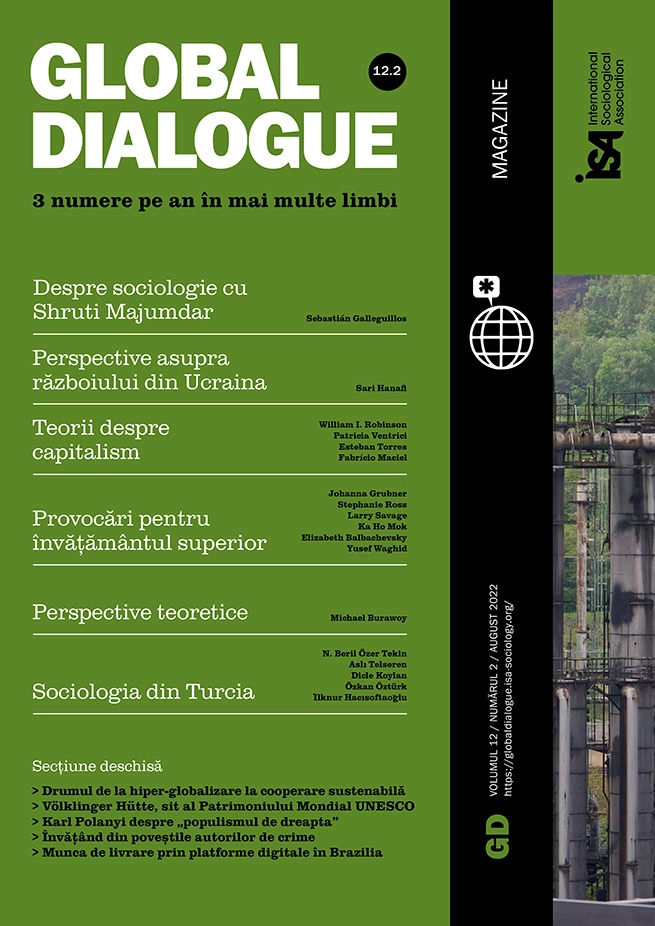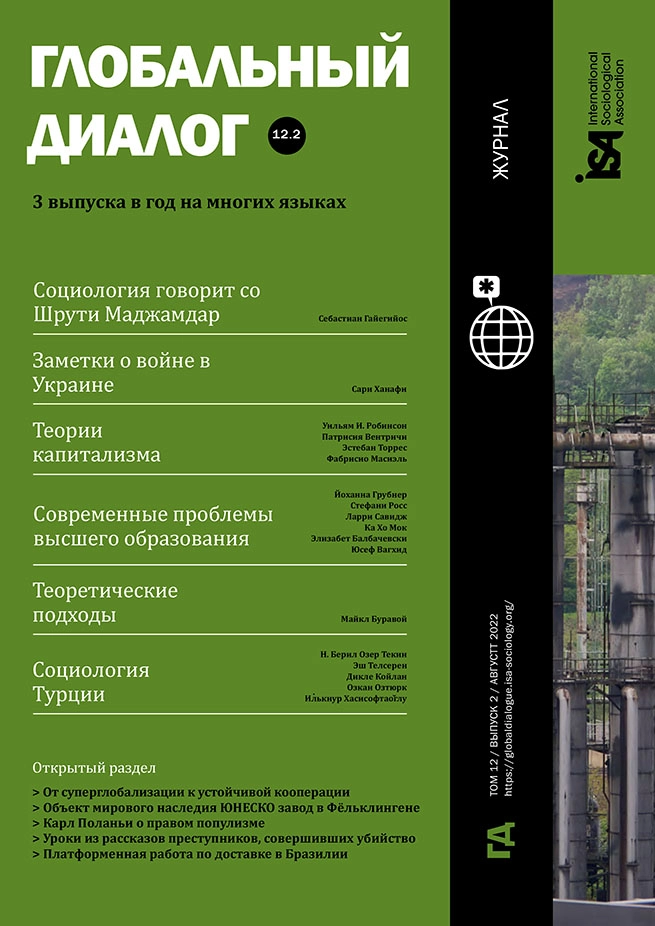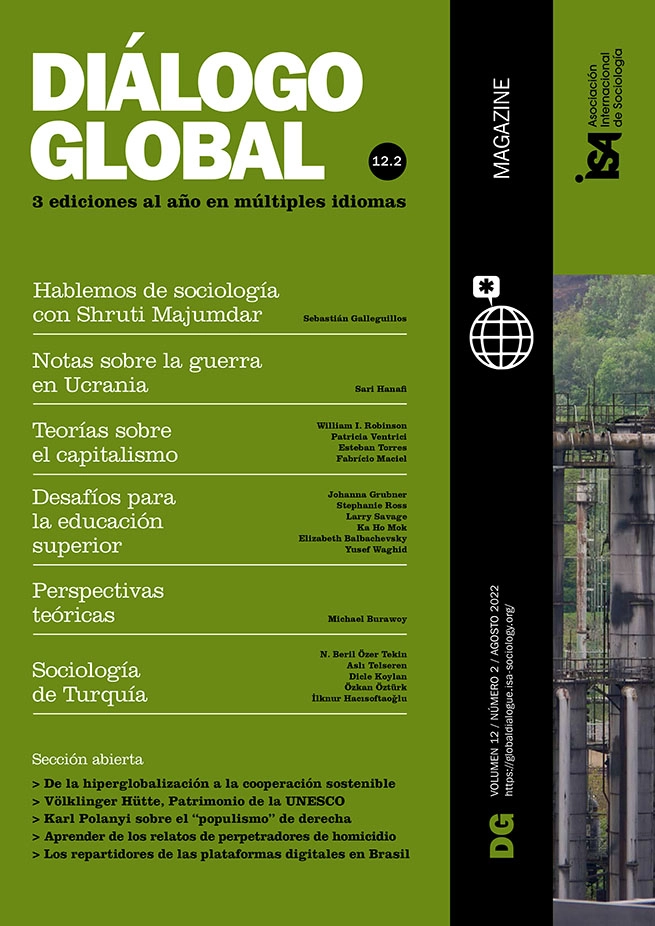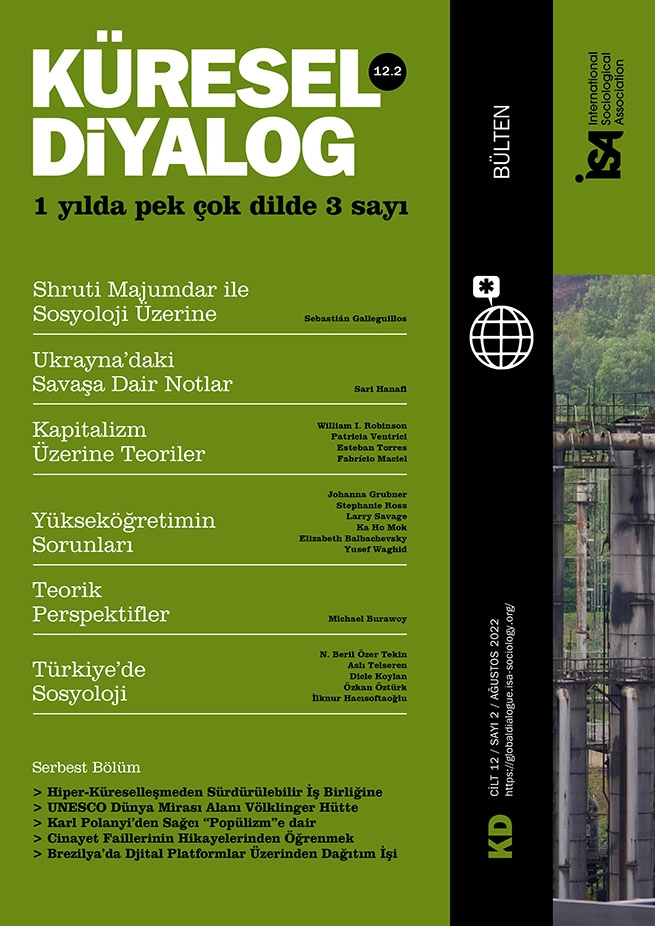The Necessity of Real Utopias
June 12, 2022
Erik Olin Wright was a pioneer in the reconstruction of Marxism. His work on contradictory class locations – intermediating relations between Marx’s fundamental classes – turned into a global project, and inspired class analysis across the globe. He wrestled with the logical foundations and empirical correlates of class until his dying days. Among his most important books are Classes (1985), Class Counts (1997), and his final reflections Understanding Class (2015). Most mortals would have been satisfied with one such major global project, but beginning in the early 1990s, Wright embarked on a second global project, the Real Utopias Project. It was a time of the collapse of actually existing socialism in the Soviet Union and its satellites, the transition of China to state capitalism, as well as the consolidation of neoliberalism.
With these historic events many pronounced Marxism dead. Wright, however, took the opposite view. Liberated from its association with the party-states of the Soviet Union and China, he saw this as an opportunity to revitalize Marxism with grounded visions of a real socialist future – visions founded in actually existing institutions growing in the interstices of capitalism or arising from capitalism’s dependence on labor. He built an elaborate theoretical architecture for real utopias in his magnum opus Envisioning Real Utopias (2010) and later presented his ideas as a manifesto, entitled How to be an Anticapitalist in the 21st Century (2019) published posthumously in thirteen languages.
But Wright was not just a theorist of real utopias, he was also a practitioner of real utopias, traveling the world in search of challenges to capitalism wherever they may appear, conversing with activists who were trying to realize their promise. He was an inspiration not just to academics but to a far wider public fighting for social justice. In dialogue with the protagonists of these real utopias, Wright would ferret out their underlying principles, their internal contradictions, and the conditions of their existence and dissemination. He would hold seminars in his own department at the University of Wisconsin but also in the furthest corners of the world to discuss the possibilities and limits of real utopias, seminars that would end up in his book series published by Verso.
For all the progress he made, Erik Wright left us with the unfinished task of bringing unity to real utopias as an anti-capitalist project. In Envisioning Real Utopias Wright lists the destructive features of capitalism that real utopias were intended to dissolve, claiming that their roots are to be found in civil society. He sought to restore the social to socialism. In How to be an Anticapitalist in the 21st Century he grounds real utopias in the values they espouse – equality, democracy, social justice, and solidarity – values that have been deployed to legitimate capitalism but can be realized only partially under capitalism. Still, there is an ambiguity about the driving force behind real utopias and in what sense they are anti-capitalist. In this short article I will suggest that one answer to these questions can be found in Karl Polanyi’s The Great Transformation (1944). As I shall argue, Polanyi’s ideas are themselves limited; they need to be infused with a dose of Marxian theory on the dynamics of capitalism. The circle is complete when we recognize that Marxian theory needs Wright’s turn from imaginary to real utopias.
Searching for the unity of real utopias
The architecture of Wright’s Envisioning Real Utopias is elegantly simple: critique of capitalism (diagnosis); alternatives to capitalism (solutions); the transformation problem (treatment). Wright has 11 criticisms of capitalism. In summary, capitalism perpetuates unnecessary human suffering; blocks conditions for human flourishing; limits individual freedom; violates egalitarian principles; is inefficient in crucial aspects; has a bias toward consumerism; destroys the environment; threatens broadly held values; fuels militarism and imperialism; corrodes community; and limits democracy. This is a quite an indictment! The elements are closely connected to one another but they do not provide any unifying theme or core critique.
If there is unity, it lies not in the critique of capitalism, but in the solution, namely the empowerment of civil society vis-à-vis the economy and the state, restoring the social in socialism. Dispensing with the idea of imaginary utopias that had dogged the history of socialism, he set about discovering “real utopias”: actually existing formations – institutions, organizations – of an anti-capitalist character that grow up in the interstices of capitalism or in symbiosis with the development of capitalism.
Some of his favorite real utopias were: the basic income grant, cooperatives, Wikipedia, participatory budgeting, the social economy. His project was to work with practitioners, formulate the real utopia abstractly, and examine its conditions of existence and dissemination as well as its internal contradictions. The real utopias were anti-capitalist in as much as they challenged one or more of the destructive features of capitalism. Wright formulated a set of strategies of transition – symbiotic, interstitial, exit, and rupture – but was rather reticent about the agents of such transformation. No less important, he failed to tie these real utopias to a theory of the dynamics of capitalism, a theory that might explain their appearance as well as their challenge to capitalism as such. I turn to Karl Polanyi and Marx to rescue Wright’s project.
From Wright to Polanyi
Polanyi, too, was enamored of real utopias – Robert Owen’s communalism, the growth of cooperatives, and the embryos of guild socialism. They were all embedded in nineteenth-century English social movements, contesting the unregulated commodification of labor. As we shall see, Wright’s real utopias can also be seen as counter-movements to commodification. What is less clear is their relationship to capitalism.
Polanyi regarded fascism, Stalinism, social democracy as state-led reactions to unregulated marketization. But what is the logical connection between the periodic assertions of market fundamentalism and capitalism? An interesting clue to the answer lies in the famous Polanyi Paradox – his failure to anticipate a third surge of marketization beginning in the 1970s, what we call neoliberalism. I call it third-wave marketization – because Polanyi’s own historical account contains not one but two waves of marketization – one in the nineteenth century largely focused on reactions to the commodification of labor and another in the twentieth century driven by the commodification of money (finance capital). The first led to a reaction of social movements, the second to reactions of the state – some progressive and some pathological. Polanyi was especially wary of the fascist response.
Polanyi thought that humanity would never again dare to experiment with market fundamentalism. Humanity would never risk the destructiveness of unregulated markets, creating what he called “fictitious commodities” – labor, money, and nature – commodities whose use value is destroyed when subject to unregulated exchange. He was wrong. There was yet another round of marketization beginning in the 1970s. Why was he blind to this possibility? The answer, I believe, is that he had an idealistic notion of market fundamentalism – a dangerous utopia that sprang from the head of misguided liberal economists.
Polanyi’s idealism also appears in his hostility to Marxist analysis of capitalism – hostility to the laws of development of capitalism and the resulting class struggle. In Polanyi’s view Marx overestimated the possibility of class struggle driven by exploitation. Indeed, there is a paradox in Marx’s account: how can there be class struggle when exploitation is not palpable but mystified and when workers have a material interest in the maximal expansion of capitalism?
Rather than wrestle with these Marxian paradoxes, Polanyi takes the view that alienation under capitalism is better understood through the lens of commodification rather than through the lens of production. Whereas for Marx commodification serves to mystify exploitation in production, for Polanyi the destructiveness of commodification, particularly of “fictitious commodities,” creates dispossession and disaffection. But in throwing out Marxist dynamics and in focusing on commodification at the expense of exploitation, on markets at the expense of production, Polanyi is left without a theory of capitalist dynamics, a theory of (dis)accumulation. Therefore, he cannot see the roots of marketization in the contradictory expansion of capitalism itself. This requires us to return to Marx.
From Polanyi back to Marx
Commodification is not an incidental feature of capitalism, created by fallible liberal economists. Rather it is the way capitalism manages to resolve its systemic crises of overproduction and profitability. Overproduction is offset by the search for new markets, and this is not just at the inception of capitalism but continues throughout capitalism, and, one might add, it involves a good dose of violence. We can think of imperialism as the extraction of raw materials made possible by cheap labor in the colonies which thereby creates new consumer markets. In other words, it is through waves of marketization – the expansion of commodification – that capitalism overcomes the crises it generates. That being the case, movements opposing commodification can be a challenge to capitalism: anti-commodification can be anti-capitalist. Thus, if we experience the destructiveness of capitalism through recurrent waves of commodification, then commodification could be the terrain for an anti-capitalist strategy.
Marx does offer us a theory of the dynamics of capitalism, indeed one that makes ever deepening commodification necessary for the survival of capitalism. However, Marx only sees resistance to capitalism as emanating from struggles in production, he doesn’t see marketization itself, the commodification of everything, as a more powerful source of collective resistance. If Marx offers us a materialist theory of the necessity of waves of marketization under capitalism, Polanyi gives us a theory of a resistance to capitalism emanating from marketization.
Armed with Polanyi and Marx we can now return to Wright. We can look upon his real utopias as anti-commodification projects. The basic income grant challenges the commodification of labor, participatory budgeting and public banking challenge the commodification of capital, Wikipedia stands against the commodification of knowledge, rural cooperatives threaten the commodification of land as well as labor. I’m suggesting, therefore, that anti-commodification is a unifying frame for his disparate real utopias. They become part of what Polanyi calls the counter-movement.
The Question of Agency
Marx did Marxism a profound disservice in refusing to fill communism with institutional content, thereby allowing any regime or any movement to call itself “communist.” Wright offers an important corrective with his real utopias, but they need a unifying rubric. Polanyi’s critique of commodification provides that unity, but he fails to see the connection between the dynamics of capitalism and successive waves of marketization. Even if Marx underestimates the destructiveness of commodification, he provides the final glue by tying accumulation to marketization. But this theoretical synthesis raises further problems.
First, as Polanyi points out, anti-commodification, so-called counter-movements, can end up feeding authoritarianism, fascism, thereby sacrificing the democratic character of Wright’s utopias. What can guarantee a democratic rather than an authoritarian solution to marketization?
Second, Polanyi assumed that when commodification threatened society, society would react back. We can no longer take that for granted. In other words, we have to worry not just about the form of the counter-movement – authoritarian or democratic – but whether a counter-movement is at all feasible.
Third, when anti-commodification becomes a form of de-commodification, it can be an effective absorption strategy. Thus, the creation of a welfare state can elicit the consent to capitalism, not its supersession. Under what circumstances does anti-commodification become anti-capitalist?
Fourth, marketization may go much further than commodification, it may expel fictitious commodities, factors of production, from the market altogether, that is the production of waste, what I call ex-commodification. Commodification can lead to the destruction of labor, land, money, knowledge, environment. This is especially true of the third-wave marketization of the last fifty years.
Fifth, the challenge of today is to scale up counter-movements to the global level. Counter-movements are still lodged at the local and national levels without tackling the global frame of commodification. We are still wedded to responses to second-wave marketization when we are in the midst of third-wave marketization.
All these questions turn on the vexing question of agency: who will form the collective actor to save humanity from capitalism? This is the problem Marx, Polanyi, and Wright have left us to solve.
Michael Burawoy, University of California, Berkeley, USA <burawoy@berkeley.edu>



